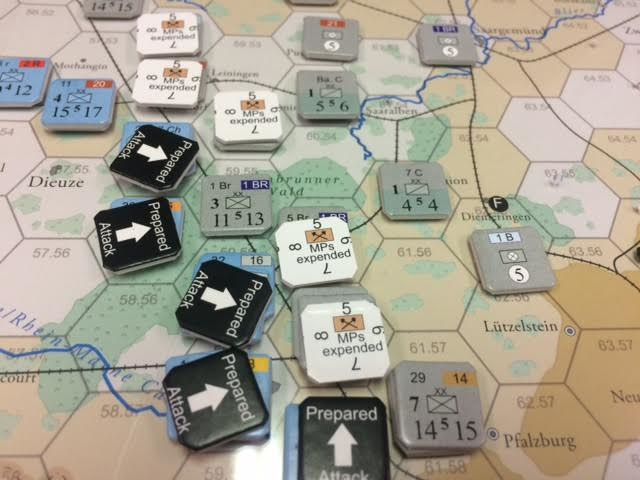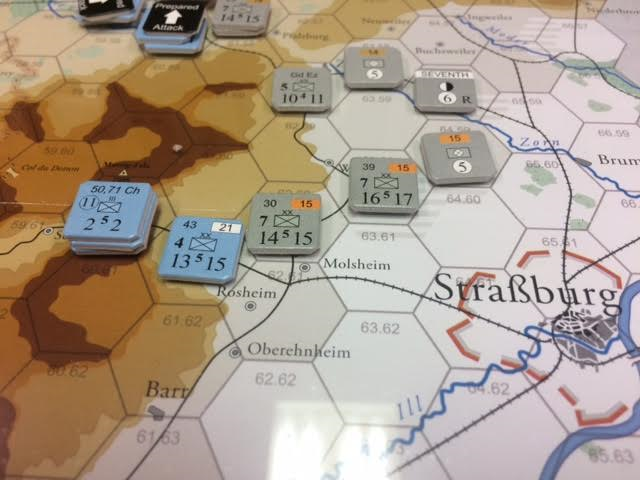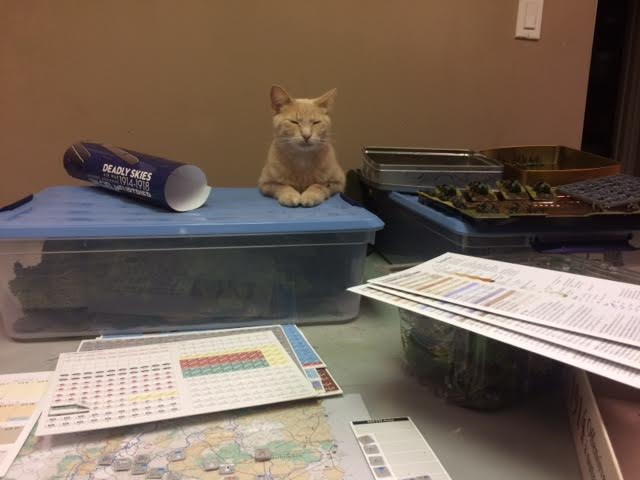Returning to an old and occasional custom here at Mad Padre Wargames, it's our Tuesday night boardgame feature, in which I spare some love for my first love, hex and counter wargames.
Tonight's subject is the GMT Games Title, 1914: Offensive a Outrance, a modest monster game working on the operational level that recreates the first weeks of World War One on the western front. a 2013 title designed by Michael Resch.
1914 features a fairly rigorous model of army organization and attachment, and forces the player to think carefully about each army's designated areas of operation and objectives. It uses historical war plans that guide each army's movement and objectives, which is useful for solitaire play. Plans can be suspended and armies can be relocated, but initially the game works according to the designs of the 1914 war planners.
Logistics is a big deal in this game, and there are detailed rules for fortresses, siege artillery, and rail movement that I haven't yet dived into.
Because it's quite the big beast, I am only playing the tutorial scenario, which features the Lorraine offensive of France's First and Second armies in the first days of the war as part of the Republic's Plan XVII. Here Second Army throws itself at the German lines in the true spirit of the bayonet, while the Germans do their best to improve their positions. The black counters indicate Prepared Attacks, which cost movement points to execute, thus forcing the offensive to move fairly slowly, but which yield better odds of success. Attacks can be moderated by the Attacker and then the Defender declaring if the battle is to be Intensive, which increases the chances of casualties.
Combat units are rated by attack and defence strength, the two large numbers at the bottom of each counter. The smaller number between them indicates combat proficiency, and the small number to the side of the unit symbol indicates organic artillery. Besides the usual retreat/advance/step loss results, the CRT gives a modifier that each side must use in what is basically a morale check after each fight, which may result in a unit's combat effectiveness being degraded.
Turns allow the defender a limited move after the attacker or phasing player completes his/her movement. Here below the French 21st XXX was trying to sneak through the Vosges to pressure Strasbourg. In the German reaction face, elements of 15 XXX have moved far enough south to check the advance, showing that the game has some potential for solitaire play, as one can think through all options for both sides each turn.
Here the 30th XX has moved into a fortress hex (as in the red lines around Strasbourg. I did some checking and concluded that this hex must represent the Fort de Mutzig, which I was delighted to find has a website and looks well worth visiting. in fact, the whole Alsace region looks like a beautiful destination, perhaps a cycling holiday.
I am only half way through a four-turn game, but the tutorial is doing its job and teaching me the basic mechanics. I am working up the nerve to try the big game this summer, but am liking it so far. Following the spirit of the French generals, I shall throw myself on the German lines like a tiger and reap the certain victory. Faith in the bayonet and the spirit of the attack shall prevail!
Marshall Luigi watched the fighting for a while, but could not bear to witness the casualties.




Oh, this is great, Michael!
ReplyDeleteI only recently got interested in this series and have picked up the two other 1914 titles, Twilight in the East and Serbien mus Sterbien (well, three if you include The Cossacks are Coming). I have yet to punch any but am mightily tempted to give them a try. The Serbia game really piques my interest.
As for the rules, they look on the complex side. In my younger days, the more complex the better. Now, taking the time to learn a new, complicated gaming model requires great effort. I envy your discipline in tackling the tutorial first. I often dive into the campaign from the start. I know, not the proper way to tackle a large problem. Your approach is much more measured.
I will be watching for more of 1914 from you. I must break mine out and give it a try. The system sure looks interesting to me.
I have only played a couple of WWI boardgames, Guns of August being the main one. This looks a lot sharper and I like the idea of response moves
ReplyDeleteIan
Guns of August is a terrible, terrible game. Every time I look at it, I wonder why I haven't just thrown it out.
DeleteSounds like a game I'd play, but not own. Far too complicated to try to learn on my own.
ReplyDeleteMarshal Luigi looks almost disgusted at the turn of events. A cat for the common soldier I am guessing?
I'm always slightly in awe of those that have the attention span for this sort of thing. Well done Michael.
ReplyDeleteI have only played a couple of WWI boardgames, Guns of August being the main one. This looks a lot sharper and I like the idea of response moves
ReplyDeletethanks for sharing...
www.golden-slot.com
gclub